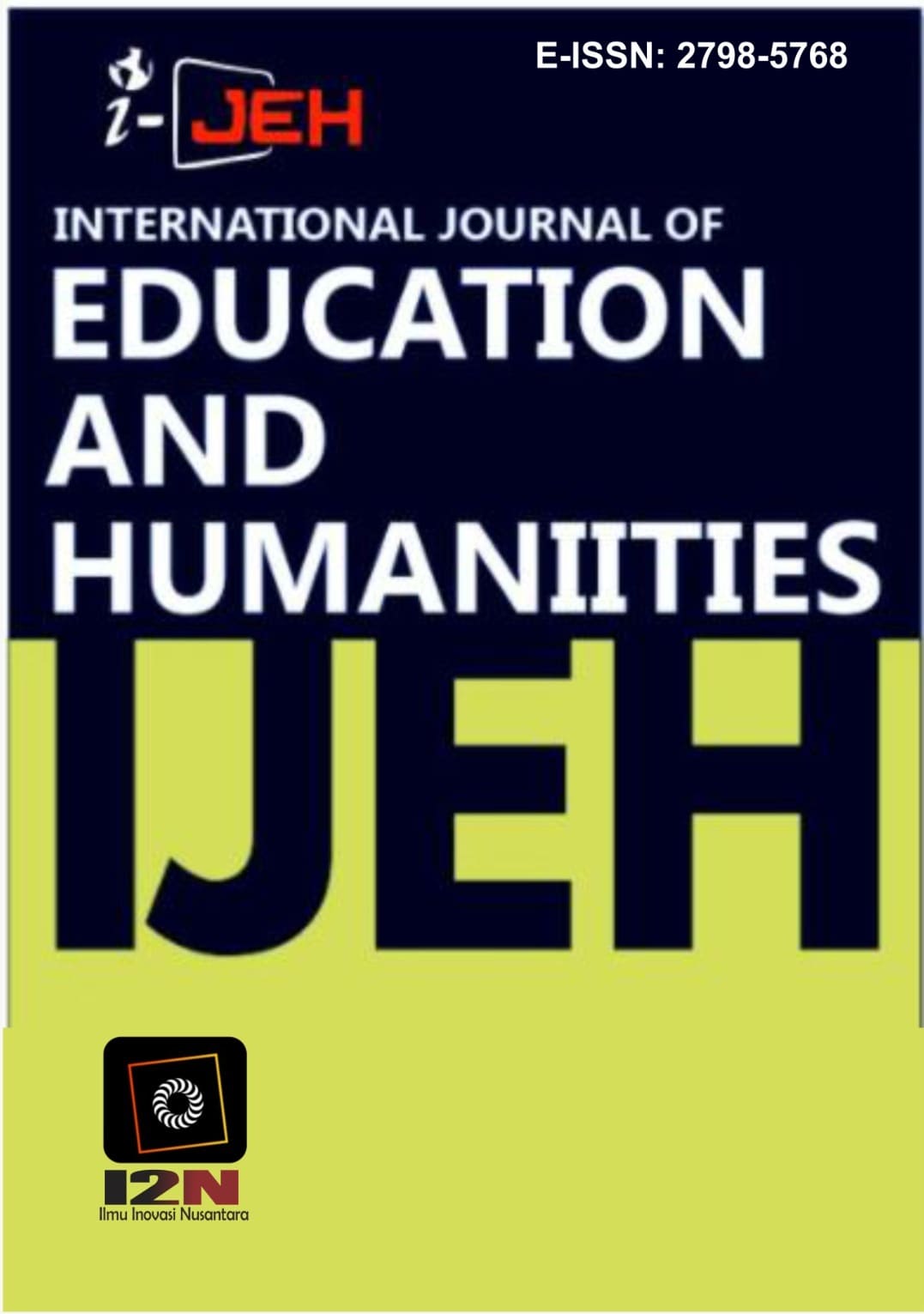Factor Related to Satisfaction with Online Learning during COVID-19 Outbreak among Public Health Students, Thailand
DOI:
https://doi.org/10.58557/ijeh.v2i3.101Keywords:
Factors, satisfaction, Online Learning, COVID-19, Public Health studentAbstract
During the outbreak, all educational institutions turned to online learning to reduce the risk of infection and prevent the spread of COVID-19. A cross-sectional study design aimed to study factors related to satisfaction with online learning during the COVID-19 outbreak among Public Health students. A total of 163 students of Bachelor of Public Health students from the Sirindhorn College of Public Health in Ubon Ratchathani province, Thailand, were included in our study. We gathered data from May to June 2021. An online survey for the COVID-19 outbreak was used to gather data. We calculated descriptive statistics; frequency, percentage, mean, and standard deviation. We analysed the data using descriptive statistics and computed the independent t-test to understand the relationship between variables. We found that majority of the participants were female (82.8%). Participants studied either a Community Public Health program (54.0%) or a Dental Public Health program (46.0%). Most participants used computer notebooks (79.8%) for online study. Google Classroom was the most frequently used online learning platform (98.2%). Overall, online learning was found moderately satisfying (mean=3.300, S.D.=0.920). There was a statistically significant difference (p<0.05) in the mean satisfaction scores compared to gender and two major programs. When comparing satisfaction with online learning between gender and two major programs, we found that there were statistically significant differences in online learning methods, contents of the curriculum, supporting factors, an evaluation, and the instructor. Additional supporting factors were no statistically significant differences between the two major programs
References
Almusharraf, M.N., & Khahro, H.S. (2020). Students’ satisfaction with online learning experiences during the covıd-19 pandemic. International Journal of Emerging Technology in Learning, 5(21), 246-267.
Alsoud, A.R., & Harasis, A.A. (2021). The Impact of COVID-19 pandemic on student’s E-learning experience in Jordan. Journal of Theoretical Appllied Electronic Commerce Research,16, 1404-1414. Doi: https://10.3390/jtaer16050079
Baber, H. (2020). Determinants of students’ perceived learning outcome and satisfaction in online learning during the pandemic of COVID-19. Journal of Education and E-Learning Research,7(3), 285-292.
Baczek, M., Zaganczyk-Ba˛czek M., & Szpringer, M. (2021). Students’ perception of online learning during the COVID-19 pandemic: a survey study of Polish medical students. Medicine, 100, 7(e24821). Doi: https://10.1097/MD.0000000000024821
Baticulon, R. E., Sy, J.J. & Alberto, N. (2021). Barriers to online learning in the time of covıd-19: A national survey of medical students in the Philippines. Medical Science Educator, 31(2),615-626. Doi: https://10.1007/s40670-021-01231-z
Bolatov, A.K., Seisembekov, T.Z. & Askarova, A.Z. (2021). Online-learning due to COVID-19 improved mental health among medical students. Medical Science Educator, 31, 183-192. Doi: https://10.1007/s40670-020-01165-y
Cao, W., Fang, Z. & Hou, G. (2020). The psychological impact of the COVID-19 epidemic on college students in China. Psychiatry Research, 287,112934. Doi: https://10.1016/j.psychres.2020.112934
Chandasiri, O. (2020). The COVID-19: Impact on education. International Journal Advanced Education and Research, 5(3),13-14.
Chung, E., Noor, N. M., & Mathew, M.N. (2020). Are You Ready? An Assessment of Online Learning Readiness among University Students. International Journal of Academic Research in Progressive Education and Development, 9(1), 301-317.
De, S. (2020). COVID-19 Pandemic Update 2020; Chapter 6: Impacts of the COVID-19 pandemic on global education (pp.84-94). Royal Book Publishing.
Dhawan, S. (2020). Online learning: A panacea in the time of COVID-19 crisis. Journal of Educational Technology Systems, 49(1), 5-22. Doi: https://10.1177%2F0047239520934018
Elshami, W., Mohamed, H. & Taha, H.M. (2021). Satisfaction with online learning in the new normal: perspective of students and faculty at medical and health sciences colleges, Medical Education Online, 26, 1, 1920090, DOI: https://10.1080/10872981.2021.1920090
Ferrel, M.N, Ryan, J. J. (2020). The impact of COVID-19 on medical education. Cureus, 12(3), e7492. Doi: https://10.7759/cureus.7492
Hamaideh, S. H., Al‐Modallal, H., Tanash, M. A., & Hamdan‐Mansour, A. (2022). Depression, anxiety and stress among undergraduate students during COVID‐19 outbreak and" home‐quarantine". Nursing Open, 9(2), 1423-1431.
Hettiarachchi, S., Damayanthi, B., & Heenkenda, S. (2021). Student satisfaction with online learning during the COVID-19 pandemic: A study at state Universities in Sri Lanka. Sustainability, 13, 11749. Doi: https://10.3390/su132111749
Huang, C., Wang, Y., & Li, X. (2020). Clinical features of patients infected with 2019 novel coronavirus in Wuhan, China. The Lancet, 395(10223), 497-506. Doi: https://10.1016/S0140-6736(20)30183-5
Meesomsak, T., & Aphai, P. (2021). The study of students’ satisfaction with online teaching and learning during the covıd-19 epidemic, case study: Fundamentals of western dance course, performing arts program, Chiang Mai Rajabhat University. Walailak Abode of Culture Journal, 21(1), 42-49.
Mudenda, S., Zulu, A., & Phiri, M.N. (2020). Impact of Coronavirus Disease 2019 (COVID-19) on College and University Students: A Global Health and Education Problem. Aquademia, 4(2), ep20026. Doi: https://10.29333/aquademia/8494
Mustafa, F., Khursheed, A., & Usama-Rizvi, S.M. A. (2021). Factors influencing online learning of university students under the COVID-19 pandemic. International Journal Educational Research and Innovation, 15, 342-359. Doi: https://10.46661/ijeri.5432
Sharma, K., Deo, G., & Timalsina, S. (2020). Online learning in the face of COVID-19 pandemic: Assessment of students’ satisfaction at Chitwan medical college of Nepal. Kathmandu University Medical Journal, 18(2), 40-47. Doi: https://10.3126/kumj.v18i2.32943
Son, C., Hegde S., & Smith, A. (2020). Effects of COVID-19 on college students’ mental health in The United States: Interview survey study. Journal of Medical Internet Research, 22, 1-14. Doi: https://10.2196/21279
Tarkar P. (2020). Impact of COVID-19 pandemic on education system. International Journal of Advanced Science and Technology, 29 (9s), 3812-3814
Wayo, W., Charoennukul, A., & Kankaynat, C. (2020). Online Learning Under the COVID-19 Epidemic: Concepts and applications of teaching and learning management. Regional Health Promotion Center, 9, 285-298.
World Health Organization. (2021). Coronavirus disease (COVID-19). Retrieved from https://www.who.int/emergencies/diseases/novel-coronavirus-2019/question-and-answers-hub/q-a-detail/coronavirus-disease-covid-19
Downloads
Published
How to Cite
Issue
Section
License
Copyright (c) 2022 Kaewjai Maleelai, Pakin Chaichuay

This work is licensed under a Creative Commons Attribution-ShareAlike 4.0 International License.














